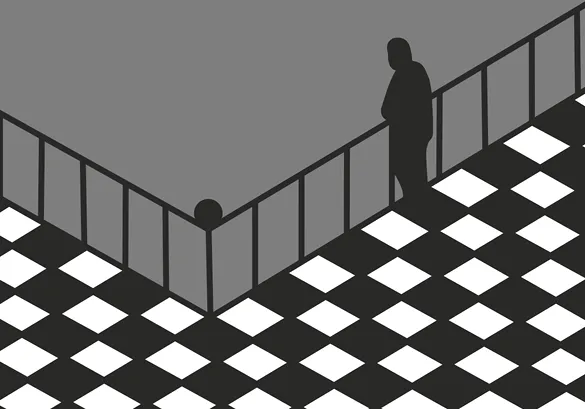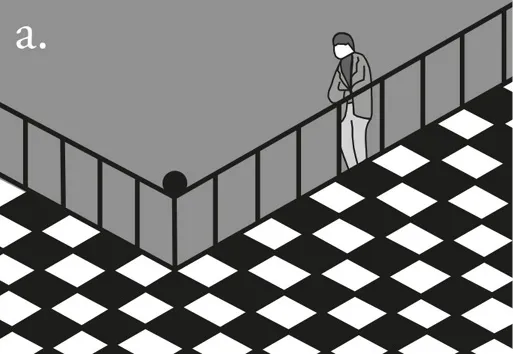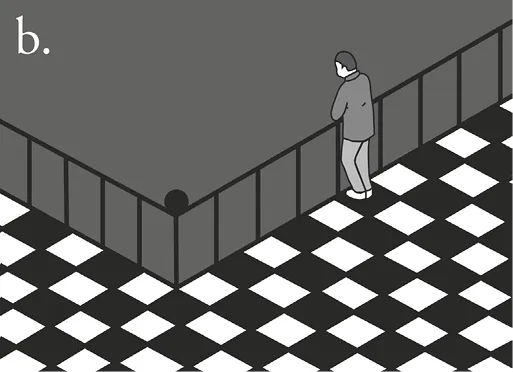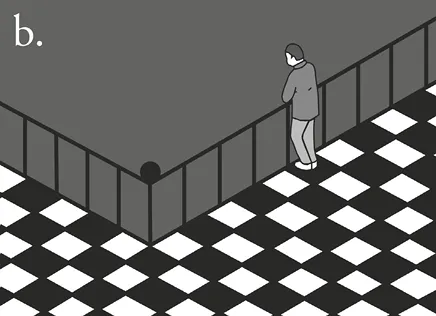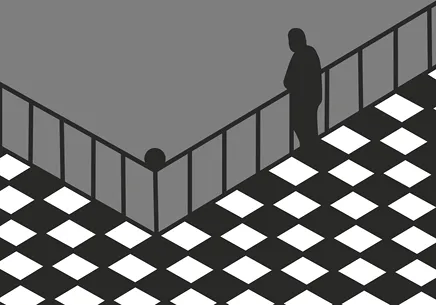Your Brain Is Playing Tricks on You
Your Brain Is Playing Tricks on You
How the Brain Shapes Opinions and Perceptions
Albert Moukheiber
Translated by Anne-Sophie Marie
Hero, an imprint of Legend Times Group LTD 51 Gower Street London WC1E 6HJ United Kingdom www.hero-press.com
First published in French as Votre cerveau vous joue des tours by Allary Éditions in 2019 This translation first published by Hero in 2022
© Allary Éditions, 2019 Translation © Anne-Sophie Marie, 2022
Published by special arrangement with Allary Éditions in conjunction with their duly appointed agent 2 Seas Literary Agency
The right of the above author and translator to be identified as the author and translator of this work has been asserted in accordance with the Copyright, Designs and Patents Act 1988. British Library Cataloguing in Publication Data available.
Printed in Great Britain by CPI
isbn (print): 978-1-91505-470-8 isbn (ebook): 978-1-91505-471-5
All rights reserved. No part of this publication may be reproduced, stored in or introduced into a retrieval system, or transmitted, in any form or by any means (electronic, mechanical, photocopying, recording or otherwise), without the prior written permission of the publisher. This book is sold subject to the condition that it shall not be resold, lent, hired out or otherwise circulated without the express prior consent of the publisher.
Contents
Foreword
Part
1. Do We Really, Literally See the World
2. How the Brain Tells Us Stories.
3. Why Do We Live so Often by
Part II: My Brain, the Other Brains
4.
5. The Illusion of our Certainties
6. Cognitive Dissonance
7. What I Can Control and What Eludes
8. The Illusion of Knowledge
9. The Importance of Context
10. A Toolbox for More Mental Flexibility
Conclusion: Regrounding Ourselves in
Acknowledgements
Glossary
Notes
Our perception is biased, our attention span is limited, our memory is deceitful. And yet, we have a coherent “world view”. We can thank our brain for this, as it performs “tricks”, mechanisms that enable us to understand the multifaceted, complex world we live in, and to share it with one another.
The brain, which shelters our knowledge, operates through estimates. The outcome is that our knowledge of things and of the world is always relative. The brain creates templates for absolutely everything: our friendships, our romantic relationships, our concept of work, our political opinions… Often unbeknownst to us, the brain tells us stories that help us better navigate through the world. It can completely recreate childhood memories or prepare us for a potential danger to save our skin if this danger proves to be real; it makes us understand that a pile of wax in front of us is actually a melted candle… but it can all the same fool us with an optical illusion or a magic trick, make us fall into the fake news trap, or into “knowledge delusion”. In this journey to the centre of the brain, we will study the mechanisms and methods of this mysterious and extraordinary organ, to discover when, why and how it plays tricks on us and on itself.
Your Brain Is Playing Tricks on You
FOREWORD
Cognitive science is a fairly recent field, currently in full expansion. Some degree of trial and error is therefore inevitable, especially when we take an interest in an organ as complex as the human brain. Throughout this book, we will proceed according to a principle we learnt from Isaac Asimov: the relativity of wrong. Contrary to popular belief, right and wrong are rarely ever absolute, but often rather relative. This is why we will give you the theoretical models that are currently the most reliable, in order to become better acquainted with your brain and to better understand your own self.
PART I How do we see the world?
1
Do we really, literally see the world with our eyes?
“Like all great travellers, I have seen more than I remember, and remember more than I have seen.”
Benjamin Disraeli, British statesman
We tend to think that we see the world with our eyes and hear it with our ears, which is normal: our perception goes through our senses first. Yet it is first and foremost with our brain that we perceive the world.
The five senses and the brain obviously work together so that human beings can indeed perceive the world. But our eyes, our ears, our tongue and our skin are actually receptors which will transform signals reflected by the outside world (optical, acoustic, olfactory…) into electrical signals. It is these thousands of electrical signals that our brain will process and filter, and which will enable us to mentally reconstruct the world.
The human brain and the world’s ambiguities
Let us analyse an experience each and every one of us has had: an optical illusion. This term is deceitful, because it leads us to think that our eyes are the ones deceiving us. Yet the victim of the illusion is often our brain.
Look at this image:
Without thinking, does the black figure seem to be facing us, or does it have its back to us? Are you above it, or below? You’re hesitating…
Now look at the image below: the individual clearly seems to be facing us, their elbows leant on the barrier, and they’re located above you. And now that you have this image in mind, look at the first version of the image again. The interpretation you make of it will copy the scenario that image (a) led you to see, and now the black figure appears to be facing you at a low-angle shot!
Now let’s go to image (b). Look at it for a few seconds, as you have done for image (a). Then come back to the original image.
The black figure from the initial image now has its back to you, and you observe it from above.
Here are now all three, placed next to each other:
By looking at the top or bottom version for a few seconds, you can modify your perception of the central image as much you like.
How do we perceive the world?
Finally, only focus on the original version: now that you know the two versions stemming from it, you can easily change your mental perspective and see the character with their front, then their back to you, from high up, then from low down, without having to watch versions (a) and (b) of the image.
Let us now get into the specificities of this illusion in order to really understand how this image affects the human brain: images (a) and (b) are stable versions of the original image. There is only one way to interpret them. The original image, however, is ambiguous because it carries several ways of being seen – two, to be precise. The central image is therefore a bistable image.
When facing it, our brain doesn’t possess enough information to solve its ambiguity and interpret it one single way. If, however, you stare at one of the two stable versions of the original image – that is to say, image (a) or image (b) – your brain will create a visual preconception and when you look at the bistable image again, you’ll reduce its ambiguity and you’ll either see a person’s front (preconception (a)) or their back (preconception (b)) when looking at the black figure.
The brain has a need to interpret the signals the world sends its way in order to create a coherent and stable representation of the latter. This is called reduction of ambiguity: as soon as it’s denied stability by being presented with ambiguous images (bistable or multistable), the brain proceeds to choose among the various options that reality contains.
This time, imagine that you’re watching the first image (i.e., the bistable image) with a friend. Neither one of you has seen the stable versions of this image. Each one of you will reduce the ambiguity at hand in their own way: the figure seems to have their back to you, while your friend sees it as facing forward. You’re actually both watching the same image, but you’re seeing two different things. If you discuss this together, you won’t come to an agreement, because your perceptions aren’t the same, but each one of you is profoundly convinced they’re seeing the image as it is. You’re even unable to see what the other sees.
A bistable illusion was the talk of the town on social media back in 2015, brilliantly asking if we really share the same world. A Tumblr user named “Swiked” posted the photo of a dress with lace insets, followed by this comment: “Guys please help me – is this dress white and gold, or blue and black? Me and my friends can’t agree and we are freaking the fuck out.” Following this, the image went viral, and the entire world, divided, debated the colour of the dress for several days! If at the time you took part in this debate, you would have likely thought that the half of the world who didn’t see the dress the same colour as you did was wrong. But now you understand that neither one of...


